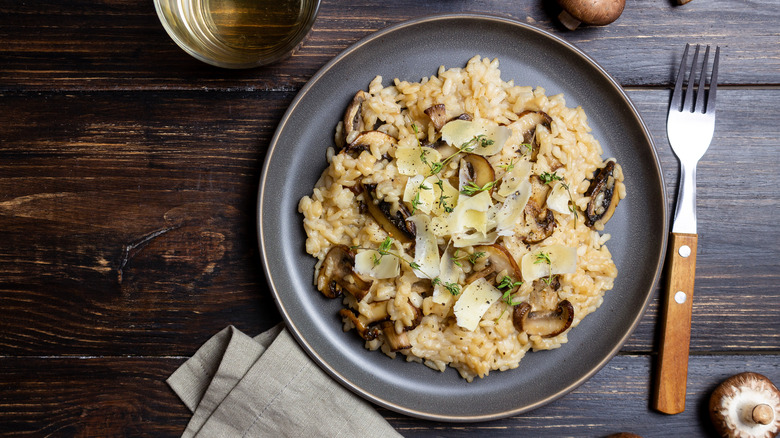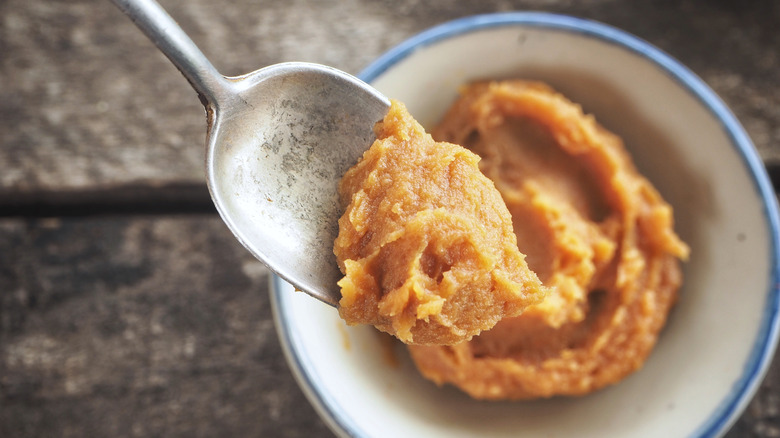The Flavorful Vegan Broth That's Perfect For Risotto
You'll often find risotto at upscale restaurants, but instead of fluffy pillows of rice, you may notice a smooth, creamy consistency. And that's because of how risotto is made. Instead of dumping a bunch of water on a pile of rice in a pot, parmesan risotto is cooked low and slow, often in a skillet. In a nutshell, rice and aromatics are sautéed together, then enhanced with some wine, and then a broth. The broth is added in small quantities while the rice is continuously stirred. This process is repeated until the rice is cooked and a creamy texture is achieved, per Food Network.
Risotto also pairs well with a number of toppings and additions, like lobster, mushrooms, and asparagus. But when it comes to making vegan risotto, vegetable toppings simply aren't enough, as several substitutions must be in order. As Vegan Foundry explains, the main ingredients you have to watch out for are chicken broth, butter, and parmesan cheese since many risotto recipes require them. Even white wines may not be vegan, per Natura Wines. That's because bone marrow, egg whites, and/or gelatin may be incorporated into the wine so they can look and taste better. (Though vegan white wines may be available.)
To make risotto vegan, all you have to do is axe the cheese and butter (and possibly the wine) and use the following vegan broth instead of chicken broth.
Try using miso broth
If you've had miso soup, then perhaps you'll know what it's made of. As BFF Asian Grill puts it, toppings like tofu, seaweed, and green onions all swim in a bowl of warm broth, often made with a combination of dashi and miso. So instead of vegetable broth for risotto, you can turn to miso broth (either without dashi or with kombu dashi, which is vegan-friendly and uses dried kelp, per Just One Cookbook).
But why miso broth, though? What's wrong with regular ol' vegetable broth? Well, as TheKitchn puts it, there are three major problems you may run into with vegetable broth, which are aroma, salt content, and color, all of which may be too high or too much for risotto. And that's where miso broth shines, especially when it comes to flavor. Risotto enhanced with miso takes on a more savory quality with the perfect levels of salt, and the smell and color will be a little better, too (compared to vegetable broths).
Flavors aside, America's Test Kitchen notes that miso also helps to thicken risotto nicely, as it adds a boost of creaminess. They recommend using ⅓ cup of white miso with 3 cups of water and 4 cups of vegetable broth, while TheKitchn suggests 2 tablespoons of white miso paste with 6 cups of water. So it's up to you whether you'd like to combine miso paste with vegetable broth or use it on its own with water.

